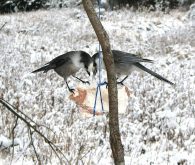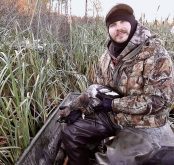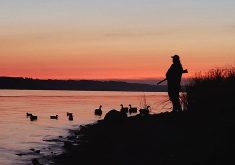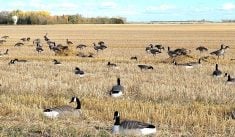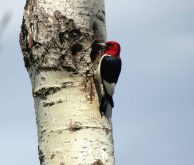Are you one of those who has recently taken up watching birds, or feeding or photographing them?
With most Manitobans staying close to home, these have become new hobbies for many. With the arrival of spring, there are different birds to watch for, new requirements in bird feeding and maybe some changes in how you take bird pictures.
Those who watch birds primarily in their own yard will have already noticed differences. Chickadees, woodpeckers, nuthatches and house sparrows will still come for sunflower seeds and suet, but migrant birds are returning. Some have been unusually early arrivals, perhaps because much of March was warmer than usual. Hopefully, snowstorms or very cold temperatures will not result in these early migrants perishing.
Read Also
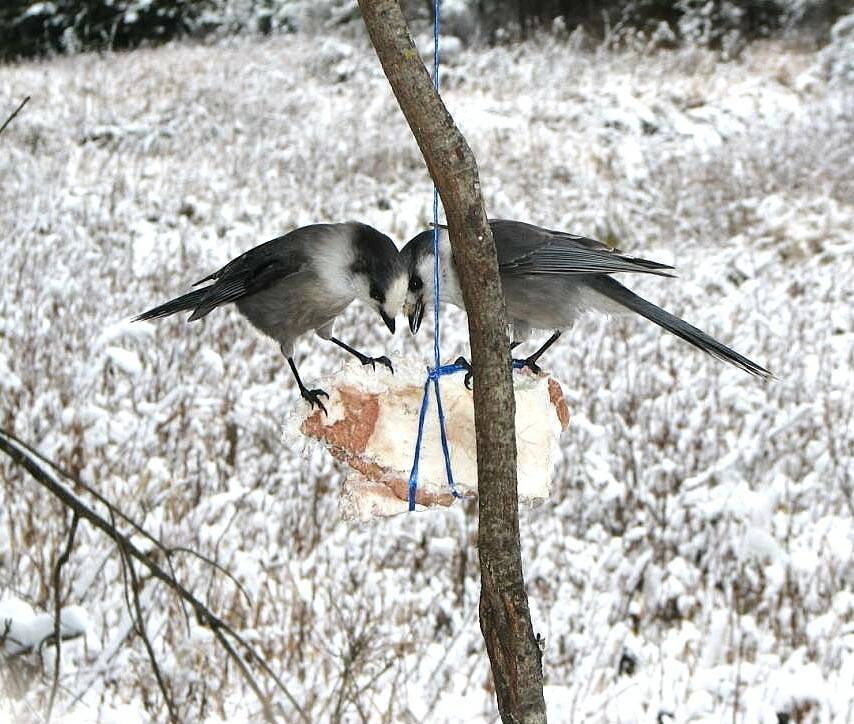
Hunting with whiskey jacks
Canada jays, or whiskey jacks, are bold little deer hunting pals that don’t mind getting close, if it means a piece of the offal or deer fat left over from a successful forest hunt in Manitoba.
Generally, birds that migrate only a short distance return soonest. Thus, geese, eagles, hawks, juncos and robins are among the earliest to appear, and many have been back for some time already. In contrast, hummingbirds are one of the latest, since their winters are spent in Mexico or Central America.
If you are feeding birds, a few changes are in order. Continue with black oil sunflower seeds but add mixed seed as some returning birds prefer smaller seeds. Buy a tube feeder or hanging bag for nyjer seed (also known as niger). It’s expensive, but attractive to goldfinches and others in the finch family. These birds are finicky and often won’t eat old seed, so buy nyjer seed in small quantities.

You may also want to stop feeding suet or mixtures containing fat as heat can cause melting and spoilage. Ground feeders such as juncos, grackles and a variety of sparrows will help clean up seeds that have dropped from feeders. Some birders provide mealworms as a protein source.
For ruby-throated hummingbirds and Baltimore orioles, hang out sugar-water feeders after warmer weather arrives, but frosty nights can result in containers breaking, so bring them inside overnight if cold weather returns. A mixture of one cup sugar added to four cups boiling water is suitable for both species, but don’t add red colouring as it’s harmful to birds. Feeders are usually bright enough to attract them. Orioles also like oranges cut in half, and grape jelly.
One caution: If you live where bears are frequent, officials advise Manitobans not to feed birds in summer, and to remove all feeders once bears emerge from their dens.

Birdwatchers may decide to venture farther than their backyards. Visit Riding Mountain National Park or our many provincial and local parks, and walk the trails to see a variety of songbirds. Or take a drive off the beaten track to watch for geese, swans, ducks and shorebirds. Take binoculars if you have them, and a camera. Often, good photos are possible from one’s car; it acts as a sort of blind so as not to frighten birds while you watch.
Oak Hammock Marsh, a globally significant Important Bird Area (IBA), is excellent for birdwatchers in eastern Manitoba, while another IBA, Whitewater Lake southwest of Boissevain, can be great in that region. Keen birders allow for several hours in either place. Another good spot to watch birds in southern Manitoba is the Delta Marsh Wildlife Management Area at the southern tip of Lake Manitoba. Walk around there to see songbirds and water birds. For water birds, shorebirds and blackbirds, the Kaleida Marsh south of Manitou on PR 8N is one place where you can watch from your car.

Hawk and eagle watchers frequent the Pembina Valley where a variety of raptors soar on air currents above the valley as they migrate north. Avid watchers do yearly counts there. A good spot to watch is along Highway 201 north of Windygates. A recent participant recounted sighting 71 raptors in an hour one day with a south wind.
If photography is your interest, remember not to distress birds by trying to get too close. Recently some birders have complained about people approaching too near to resting birds, or those building nests or already sitting on eggs (such as owls). Give the birds space if they appear to be bothered by your presence.
Keen birders often keep lists of birds as they see them each spring. Some, such as many warblers, rose-breasted grosbeaks and several of the sparrow species are just migrating through and will be around for only a few days or weeks. Others, like robins, hummingbirds, swallows and wrens can be enjoyed all summer.



